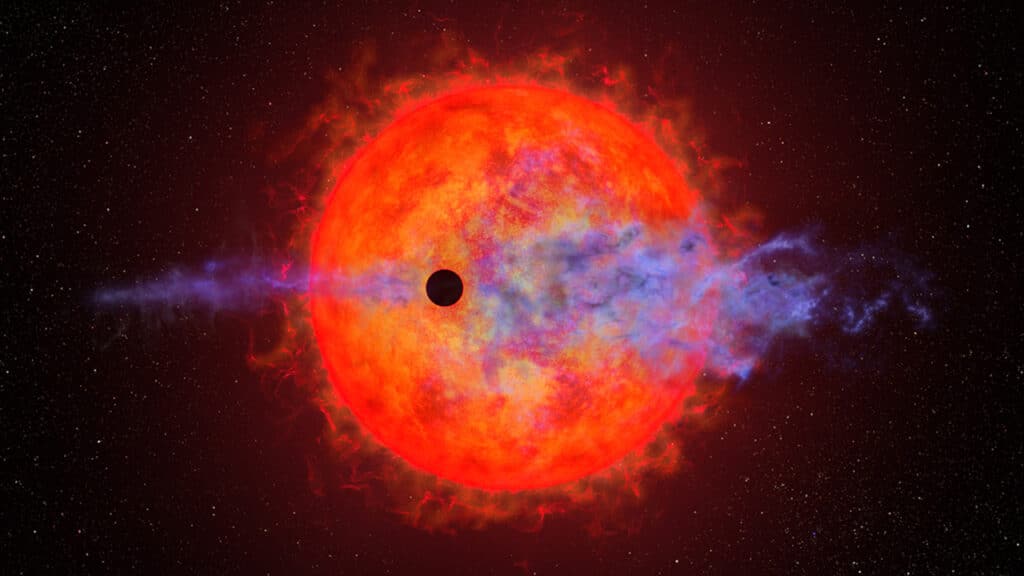Astronomers using NASA’s Hubble Space Telescope have made an unexpected discovery that challenges current understanding of planetary evolution. In observations of a distant planet orbiting its star, there were times when the planet seemed to lose no atmospheric material and then, in a later orbit, showed clear signs of such loss.
Essentially, the evaporating planet was getting the “hiccups.”
“We’ve never seen atmospheric escape go from completely not detectable to very detectable over such a short period when a planet passes in front of its star,” says Keighley Rockcliffe, of Dartmouth College in Hanover, New Hampshire, in a statement. “We were really expecting something very predictable, repeatable. But it turned out to be weird. When I first saw this, I thought ‘That can’t be right.'”
The planet in question, AU Mic b, orbits a young star named AU Microscopii (AU Mic) that is located 32 light-years away from Earth. This star system is particularly young, with AU Mic being less than 100 million years old in comparison to our sun, which is 4.6 billion years old. AU Mic b is a gaseous giant about four times the diameter of Earth and orbits very close to its star.
What further puzzled Rockcliffe was when the atmospheric loss was detectable, it seemed as though the planet’s atmosphere was projecting forward, akin to “a headlight on a fast-bound train.”
“This frankly strange observation is kind of a stress-test case for the modeling and the physics about planetary evolution,” notes Rockcliffe. “This observation is so cool because we’re getting to probe this interplay between the star and the planet that is really at the most extreme.”
Stars like AU Mic, called red dwarfs, are abundant in our Milky Way galaxy and potentially host the majority of its planets. Yet, they have a significant challenge in potentially hosting life. They emit ferocious flares that bombard any nearby planet with intense radiation, a consequence of their strong magnetic fields.
“This creates a really unconstrained and frankly, scary, stellar wind environment that’s impacting the planet’s atmosphere,” says Rockcliffe.
Due to this harsh environment, planets that form near these young stars might lose their atmospheres completely.
“We want to find out what kinds of planets can survive these environments. What will they finally look like when the star settles down? And would there be any chance of habitability eventually, or will they wind up just being scorched planets?” questions Rockcliffe. “Do they eventually lose most of their atmospheres and their surviving cores become super-Earths? We don’t really know what those final compositions look like because we don’t have anything like that in our solar system.”
The Hubble Space Telescope has enabled scientists to observe these phenomena by measuring changes in a star’s brightness as atmospheric material, particularly hydrogen, escapes from its orbiting planet.
The unprecedented observations from AU Mic b might be a result of the red dwarf’s extreme outbursts caused by its turbulent magnetic field lines. One theory suggests that a powerful stellar flare might have changed the escaping hydrogen to the point where it became transparent and thus was not detectable. Another posits that the stellar wind is shaping the atmospheric outflow, sometimes even causing it to move ahead of the planet.
Scientists hope that further observations with Hubble will provide more insights into this puzzling behavior and shed light on the interactions between stars and their planets.
The research is published in The Astronomical Journal.













